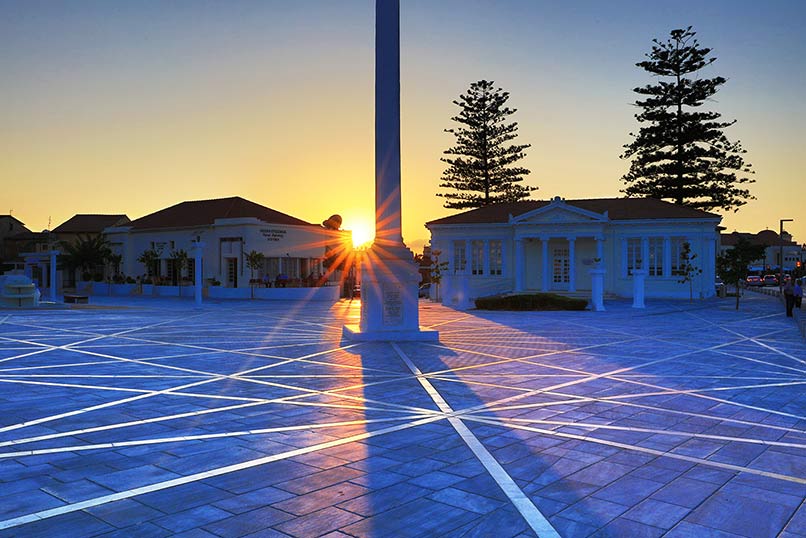As part of a wider development programme in Pafos, Cyprus, three of the city’s squares were completely renovated and connected to create an attractive and inclusive public space. The ERDF-funded project was completed in advance of Pafos taking on the role of European Capital of Culture 2017, offering a stunning backdrop to the many activities and cultural events organised to showcase the city.
Inclusive urban regeneration breathes new life into Pafos’ Old Town
- 19 September 2020
These are projects that have changed Paphos and shaped its image for the decades to come.
Located in the heart of Pafos’ ‘Old Town’, the new pedestrianised area offers 25 000m2 of connected open space with specially designed features for the visually impaired and for those in wheelchairs. It also incorporates and valorises the remains of two carved tombs that date from the Hellenistic and Roman period. Together with the other projects that have been carried out across the city’s historic centre and wider area, this project has helped revitalise Pafos and stimulate economic growth.
Making Pafos’ old town more attractive
While Pafos’ long coastline draws tourists looking for a beach holiday, the city and surrounding areas have plenty to offer visitors interested in exploring Cyprus’ history and culture. Pafos is home to three Unesco sites: the remains of ancient Nea Paphos (Aphrodite’s Sacred City), the village of Kouklia, and of the Tombs of the Kings necropolis. Its Old Town offers a wealth of interesting sites, including restored Ottoman baths, Ibrahim’s Khan, churches, mosques, municipal gardens and markets.
However, due to decades of underinvestment, the Old Town’s infrastructure had suffered considerably. Buildings were in disrepair, narrow city streets clogged with cars, and city squares had been turned into car parks.
With the aim of reclaiming the town centre for locals and tourists alike, the ERDF-funded project set about redesigning the three squares surrounding the Municipal Gardens – which houses the Town Hall – to create a unified pedestrian space that connects and enhances the three areas.
Marble paving stones, in various textures and sizes, were chosen for the surface of the project area – covering October 28th, Kostis Palamas and Dionysios Solomos squares. White marble lines emanate from the main monuments of October 28th and Kostis Palamas squares. This material was chosen to reinforce the identity and neoclassical character of the area.
To ensure that the new space could be enjoyed by all visitors, special elements were included to allow wheelchair users, and the visually impaired to access and use space safely. Angled kerbstones allow easy wheelchair access, while the use of special marble slabs guides the visually impaired on configured routes.
Preserving Pafos’ history
As well as offering a new, inclusive open space that locals and visitors can enjoy, and that can be used for events and activities, the project has contributed to maintaining the city’s heritage.
The remains of two carved tombs, dating from the Hellenistic and Roman period, were incorporated in the project. Protected against the weather by light, reversible covers, the tombs can now be viewed by the public.
Stimulating economic development
Together with related projects that have been carried out across Pafos’ historic centre and wider area, this project has helped revitalise the city and stimulate economic growth.
Local investment and entrepreneurship has increased, as seen in new businesses opening. More cultural events are being organised, and the number of visitors, both local and foreign, has significantly increased.
Total investment and EU funding
Total investment for the project “Inclusive public space in the Old Town of Paphos” is EUR 4 000 000 with the EU’s European Regional Development Fund contributing EUR 3 400 000 through the “Competitiveness and sustainable development” Operational Programme for the 2014-2020 programming period. The investment falls under the priority “Sustainable urban development”.

